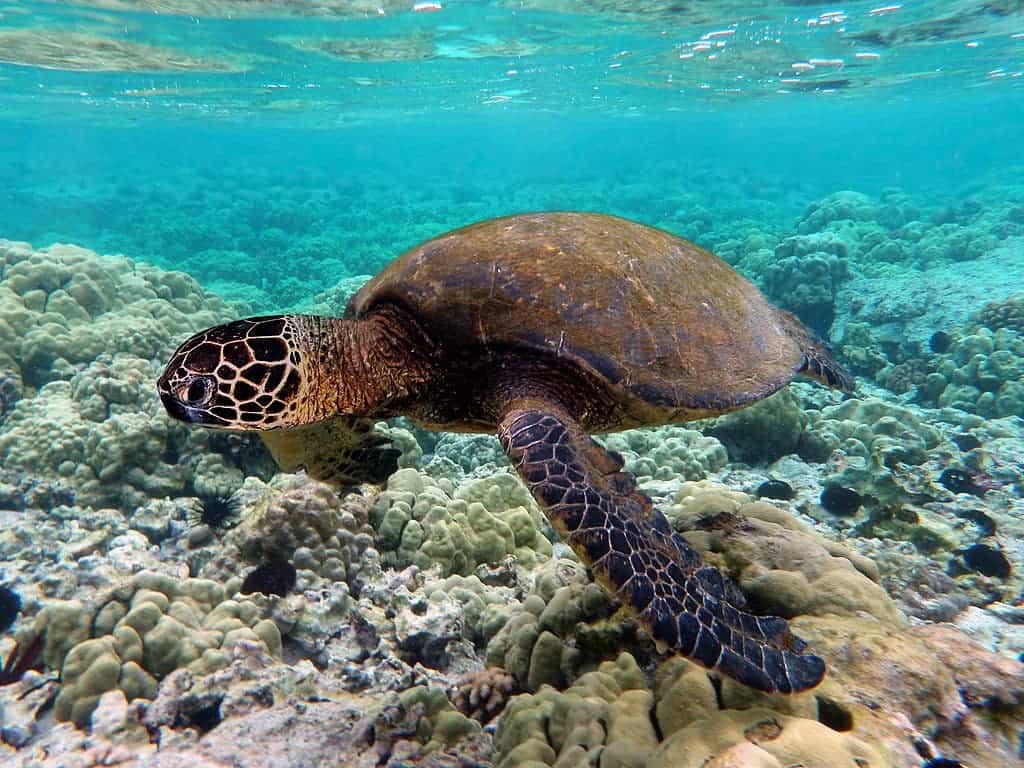
In addition to the climate crisis, one of the largest threats to wildlife biodiversity is the illegal killing and trafficking of animals and plants. There’s a big black market of wildlife trade around the world, in which animals, especially those endangered and threatened species are sold for their pelts or used as traditional medicine, food, aphrodisiacs, and curiosities.
Sea turtles are among the most targeted animals, with over 1.1 million illegally killed and in some cases trafficked between 1990 and 2020, according to a new study. The researchers found that as many as 44,000 sea turtles were exploited each year over the past decade in 65 countries and in 44 of the world’s 58 sea turtle populations.
The study, the first global assessment of sea turtles poaching, also showed that the reported illegal exploitation of sea turtles dropped by about 28% over the last decade. Researchers believe it could be due to an increase in protective legislation, enhanced conservation efforts, growing awareness, and changes in local norms and traditions.
As well as this decline, the researchers also found that most of the poaching over the past decade happened in large, stable, and genetically diverse sea turtle populations. This means most of these turtles came from low-risk populations and that poaching didn’t have a big impact on most major sea turtle populations around the world from a genetic perspective.
However, this positive development should be taken with caution, the researchers said. The study didn’t include eggs or turtle products, such as earrings made from sea turtle shells. Jesse Senko, co-author of the study, said assessing illegal activities is always difficult, especially when it’s organized or connected to crime syndicates.
Assessing sea turtles
The exploitation of sea turtles has been a traditional activity of coastal communities for centuries. Many tribes along the coast of countries capture them for subsistence. While this was first occurring at sustainable levels, consumption of sea turtles then became more common, with sea turtle meat introduced in Europe as a delicacy.
Sea turtle consumption, both legal and illegal, currently happens in many parts of the world, including Central and South America, the Indian Ocean, the Caribbean, and Australia. Apart from the meat, coastal communities also use internal organs for soup as well as the fat and blood as “traditional medicine”.
In the study, the researchers went through data from journal articles, media and NGO reports, and online questionnaires. They found patterns that they believe could help in establishing conservation priorities. For example, Vietnam was found as the most common country of origin for illegal sea turtle trafficking, followed by China and Japan.
There are seven existing species of sea turtle but the study found that over the 30-year study period 95% of poached sea turtles came from two species — green (Chelonia mydas) and hawksbill (Eretmochelys imbricate) turtles, both of which are endangered. Also, Southeast Asia and Madagascar were found to be hotspots for turtle take and trade.
“Our assessment is an important foundation for future research and outreach efforts regarding illegal sea turtle exploitation. We believe this study can help conservation practitioners and legislators prioritize conservation efforts and allocate their resources to best help protect sea turtle populations from harmful levels of exploitation worldwide,” Kayla Burther, co-author, said in a statement.
The study was published in the journal Global Change Biology.


